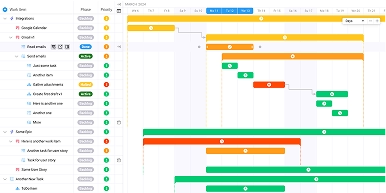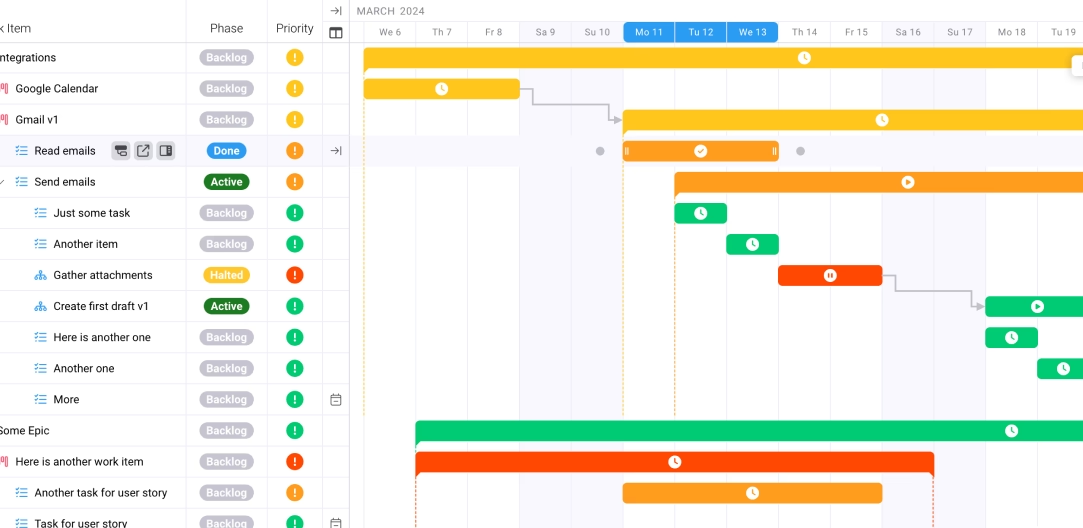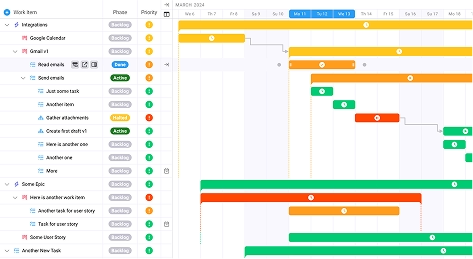
Ravetree vs. Kantata: Which Is The Best PSA Tool For Service Firms?
Key takeaways:
The market was valued at $11.86 billion in 2023, yet most professional services firms still struggle with a critical question: which PSA platform will actually solve their operational challenges? The choice between Ravetree vs. Kantata isn't just another software decision. It's a strategic investment that will determine whether your firm scales profitably or drowns in administrative chaos.
Your operations director just spent three weeks evaluating options. Your finance team demands better project profitability visibility. Your project managers are buried in spreadsheets. Meanwhile, billable utilization rates have declined across the industry, and every percentage point lost translates directly to revenue leaving your business.
This comprehensive comparison cuts through marketing hype to deliver the strategic intelligence you need for confident decision-making when evaluating Ravetree vs. Kantata.
The Current Challenge Facing Professional Services Firms
Professional services organizations face an unprecedented operational crisis. The PSA software market is projected to reach $25.25 billion by 2030, driven by firms desperately seeking solutions to endemic challenges. Yet market growth doesn't guarantee individual success.
The symptoms manifest across every department. Project managers lack real-time visibility into resource availability. Inaccurate time data leads to projects being priced with wrong utilization rates, creating a profitability myth where individual projects appear successful while overall business margins deteriorate. Finance teams struggle to reconcile billing against actual delivery costs. Client expectations for transparency and accountability have never been higher.
Tool sprawl compounds these challenges. The average professional services firm juggles separate platforms for project management, work management software, time tracking, CRM, and billing. Each disconnected system creates data silos, manual reconciliation work, and opportunities for revenue leakage. Administrative overhead consumes hours that could drive billable work.
Industry benchmarks for billable utilization typically range from 70-75%. Firms falling below this threshold face existential threats. Those exceeding it risk employee burnout and quality degradation. The window for optimal performance narrows as client demands intensify and competitive pressures mount.
Resource allocation decisions made without comprehensive data lead to cascading failures. Overutilized team members burn out while others remain underutilized. Projects suffer scope creep without proper tracking mechanisms. Client relationships deteriorate when delivery doesn't match promises. The cost extends beyond immediate revenue to long-term reputation damage.
Firms must leverage advanced data analytics and AI to maintain competitive positioning. Technology adoption isn't optional anymore. It's the baseline requirement for operational viability. Organizations clinging to manual processes and disconnected systems face inevitable marginalization as more agile competitors gain market share.
Understanding PSA Software Requirements
Professional Services Automation software represents more than upgraded project management tools. It provides the operational backbone for service delivery excellence. Selecting the right PSA software requires careful evaluation of how platforms integrate financial management, resource optimization, and client relationship management into unified ecosystems.
Modern PSA platforms must deliver five critical capabilities. First, comprehensive project visibility from initiation through delivery and billing. Teams need real-time access to project status, budget consumption, and resource allocation across all engagements simultaneously. Second, intelligent resource management that matches skills and availability against project requirements while maintaining optimal utilization rates.
Third, sophisticated financial tracking that connects time entries to billing, expense management, and profitability analysis at granular levels. Fourth, client portal functionality that provides transparency without generating additional administrative burden. Fifth, business intelligence capabilities that transform operational data into strategic insights for decision-making.
Marketing agencies represent the fastest-growing PSA software segment, driven by complex client deliverables and tight margin requirements. However, the principles apply across professional services categories. Whether delivering IT services, consulting engagements, or creative projects, firms need unified platforms that eliminate context switching and manual data reconciliation.
Integration capabilities separate viable platforms from inadequate solutions. PSA software must connect seamlessly with existing accounting systems, communication tools, and specialized applications specific to your service delivery model. API availability and pre-built connectors determine whether implementation creates new silos or genuinely consolidates your technology stack.
PSA platforms provide comprehensive operational risk management through automated compliance monitoring, real-time project dashboards, and predictive analytics. Organizations implementing robust PSA solutions achieve measurably better outcomes including higher billable utilization, improved realization rates, and stronger EBITDA performance compared to firms relying on disconnected systems.
Mobile accessibility has transitioned from luxury to necessity. Distributed teams and client-site work require full platform functionality across devices. Time tracking, project updates, and approval workflows must function identically on mobile as desktop environments. Firms without mobile-optimized PSA capabilities handicap their operational efficiency and client responsiveness.
User experience design directly impacts adoption rates and return on investment. Intuitive interfaces reduce training requirements and increase utilization across team members. Customizable dashboards ensure each role accesses relevant information efficiently without overwhelming complexity. The best PSA platforms feel natural to use rather than forcing users to adapt to rigid structures.
Ravetree vs. Kantata: Comprehensive Platform Comparison
Kantata earned the #6 ranking on G2's 2025 Best Software Awards, demonstrating strong market recognition. Ravetree positions itself as the comprehensive PSA solution purpose-built for professional services firms requiring all-in-one functionality. The comparison between Ravetree vs. Kantata requires examining architecture, feature depth, and strategic positioning.
Platform Architecture and Philosophy
Kantata built its platform for larger professional services organizations managing complex project portfolios with sophisticated resource optimization needs. The system emphasizes business intelligence capabilities and advanced analytics, positioning itself as the enterprise-grade solution. Its Salesforce foundation provides robust integration possibilities for organizations already invested in that ecosystem.
Ravetree developed its platform specifically for mid-market professional services firms seeking unified work management without enterprise complexity. The solution integrates project management, CRM, resource planning, time tracking, and billing into single accessible platforms. This architectural approach eliminates the integration challenges that plague implementations requiring multiple specialized tools.
Project Management Capabilities
Both platforms deliver comprehensive project management functionality including Gantt charts, Kanban boards, and task dependencies. Kantata provides advanced portfolio management features ideal for organizations juggling numerous concurrent engagements across multiple service lines. Its project hierarchy system supports complex organizational structures with sophisticated reporting requirements.
Ravetree excels in creative workflow management with features specifically designed for agencies and professional services firms handling retainer relationships alongside project work. The platform's template system accelerates project setup while ensuring consistency across similar engagements. Custom workflows adapt to diverse service delivery models without forcing organizations into rigid methodologies.
Resource Management and Optimization
Kantata's resource management emphasizes sophisticated forecasting and skills-based allocation. The platform provides workload views, capacity planning, and scenario modeling that help larger organizations optimize utilization across global teams. Its recommendation engine suggests resource assignments based on skills, availability, and cost considerations.
Ravetree delivers intuitive resource management focused on practical allocation decisions. The visual resource scheduler provides instant visibility into team capacity and project assignments. Real-time utilization tracking helps managers balance workloads proactively. The system accommodates both full-time employees and contract resources within unified planning frameworks.
Financial Management and Billing
Financial management represents a critical differentiator in the Ravetree vs. Kantata comparison. Kantata provides enterprise-level financial features including sophisticated revenue recognition, complex billing rules, and detailed profitability analysis. The platform handles multi-currency requirements and integrates with major ERP systems for comprehensive financial management.
Ravetree offers streamlined financial management designed for operational efficiency rather than accounting complexity. The platform tracks project budgets, captures time and expenses, and generates client-ready invoices without requiring specialized financial expertise. Automated budget alerts notify managers when projects approach predetermined thresholds, enabling proactive intervention before margin erosion occurs.
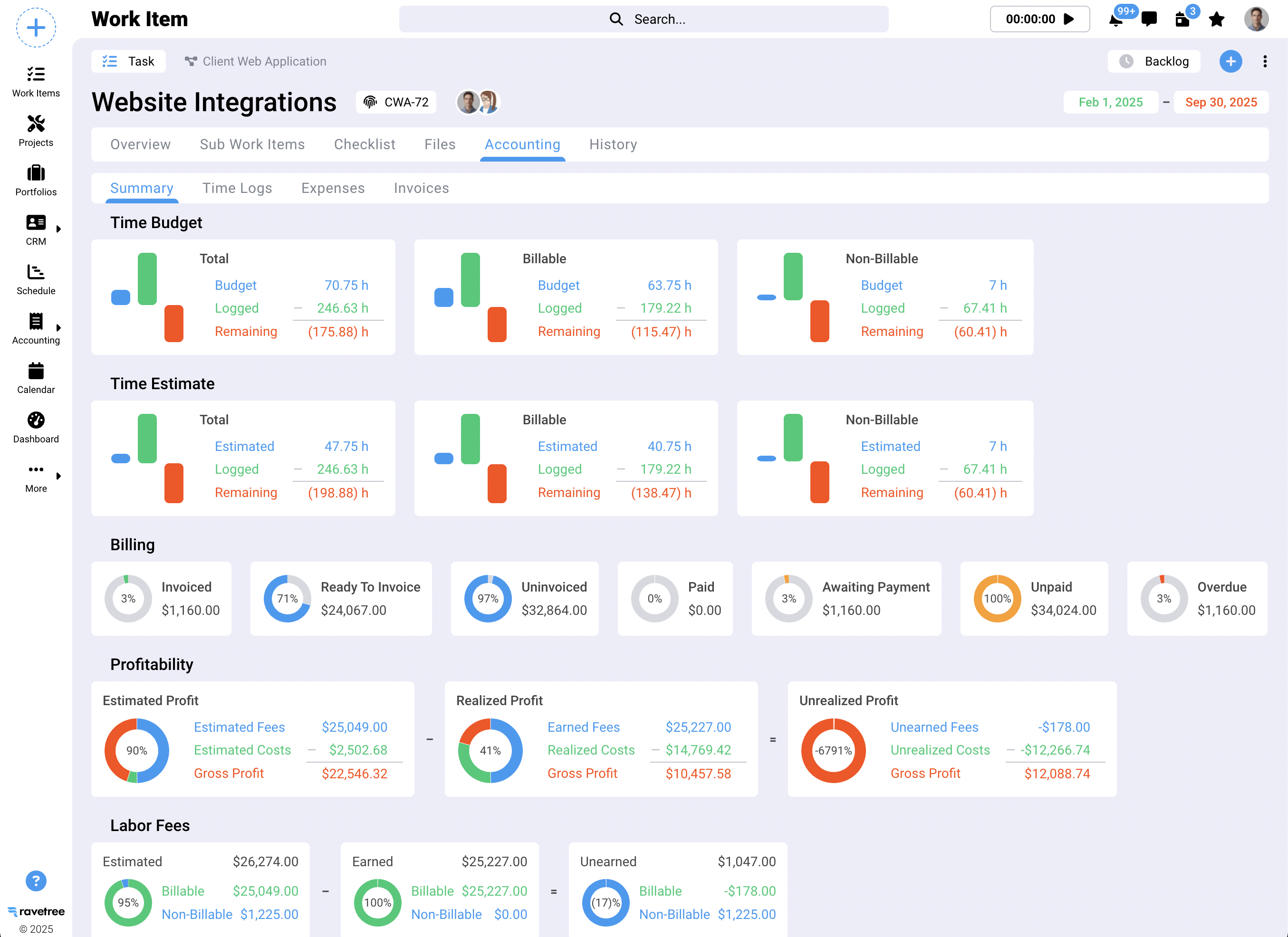
Client Collaboration and Communication
Kantata's client collaboration features support professional service delivery through shared project spaces and milestone tracking. The platform provides visibility without exposing internal operational details. Communication tools facilitate client interaction while maintaining appropriate boundaries between internal and external stakeholders.
Ravetree's client portal functionality emphasizes transparency and self-service capabilities. Clients access project status, review deliverables, approve work, and submit requests without generating additional administrative burden for your team. The branded portal experience reinforces your professional image while streamlining client communication.
Business Intelligence and Reporting
Successful PSA evaluation requires systematic assessment of reporting capabilities. Kantata emphasizes advanced analytics with customizable dashboards and sophisticated report builders. The platform provides access to BI consultants who can create custom reporting solutions tailored to unique organizational requirements. This approach suits larger firms with dedicated analytics teams.
Ravetree delivers practical reporting focused on the metrics that directly impact professional services profitability. Pre-built reports cover project performance, resource utilization, financial tracking, and client profitability without requiring database expertise. The dashboard customization allows each role to access relevant metrics efficiently while maintaining simplicity that encourages adoption.
Implementation and Onboarding
Kantata implementations typically require significant time investment and often involve professional services from implementation partners. The complexity reflects the platform's enterprise positioning and extensive feature set. Organizations should plan 3-6 months for full deployment depending on size and integration requirements.
Ravetree emphasizes faster implementation timelines with onboarding processes designed for operational teams rather than IT departments. Most organizations achieve basic functionality within weeks, with full deployment occurring within 1-3 months. The platform's intuitive design reduces training requirements while built-in guidance helps teams adopt best practices organically.
Pricing and Total Cost of Ownership
Kantata pricing typically starts around $45 per user monthly with costs varying based on features and user count. Enterprise implementations often involve significant additional costs for professional services, customization, and ongoing support. The total cost of ownership includes not just subscription fees but implementation services and potential integration development.
Ravetree provides transparent pricing designed for mid-market organizations. The subscription model includes comprehensive features without tiered limitations that force upgrades. Implementation costs remain predictable with clear onboarding processes. The total cost of ownership advantage stems from faster deployment, lower training requirements, and unified functionality eliminating need for supplementary tools.
Strategic Selection Framework for Ravetree vs. Kantata
Choosing between Ravetree vs. Kantata requires systematic evaluation beyond feature checklists. Client-centric approaches drive competitive differentiation, and your PSA platform choice directly impacts service delivery quality. The selection framework must align technology capabilities with strategic business objectives.
Organization Size and Complexity
Mid-market professional services firms with 10-150 employees find Ravetree's unified approach matches their operational reality. These organizations need comprehensive functionality without enterprise complexity. They value straightforward implementation and intuitive interfaces that don't require dedicated administrators. The all-in-one architecture eliminates integration challenges while providing growth runway.
Larger organizations with 150+ employees and complex organizational structures may benefit from Kantata's enterprise-grade capabilities. These firms often have dedicated operations teams, established technology infrastructures, and sophisticated reporting requirements. The investment in implementation services and potential customization provides returns through advanced capabilities matching organizational complexity.
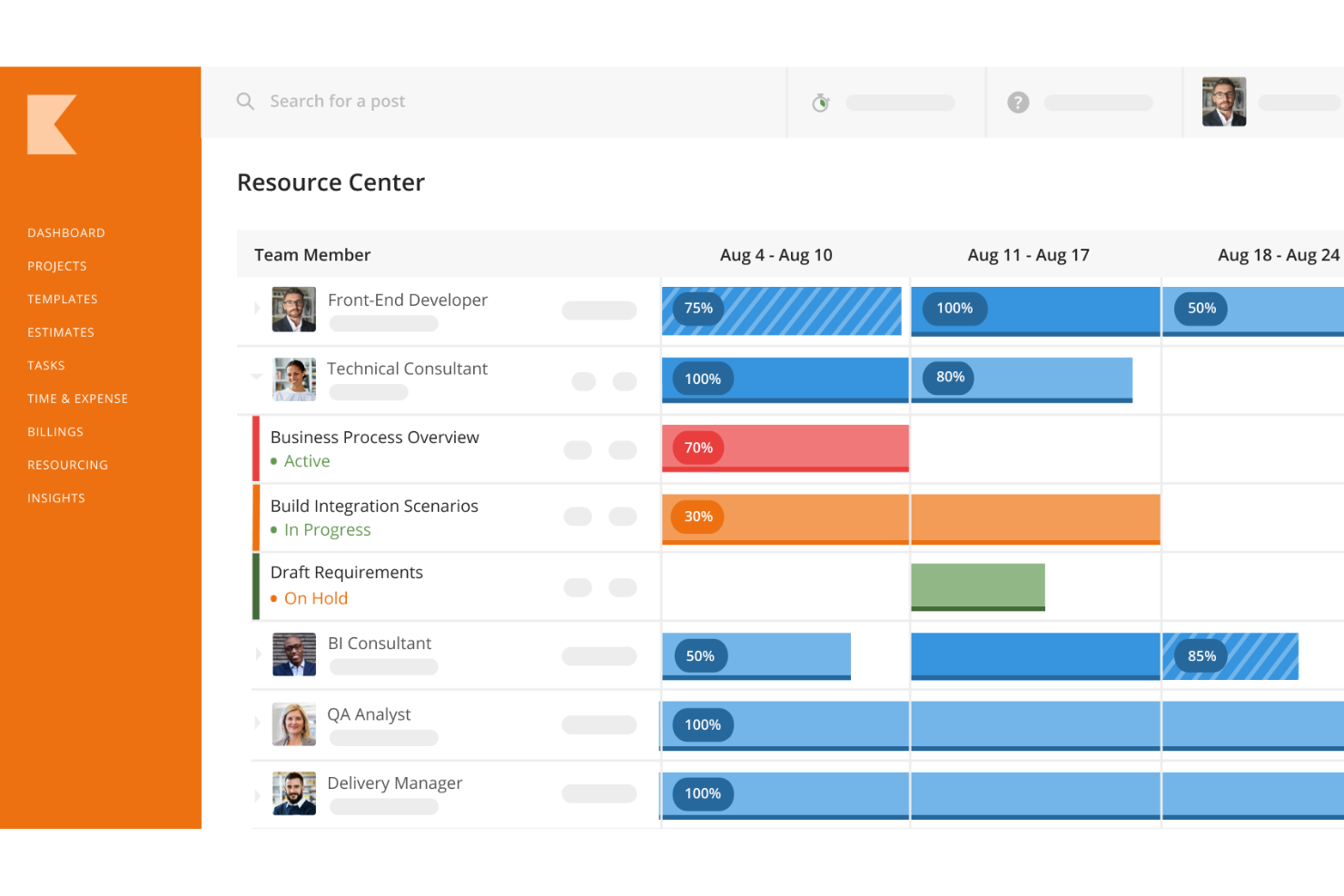
Service Delivery Model Considerations
Agencies prioritize tool consolidation to reduce tech stack complexity. Firms combining retainer management with project work need platforms handling both models seamlessly. Ravetree specifically addresses this hybrid delivery approach with features designed for recurring service agreements alongside discrete projects.
Organizations focused exclusively on large-scale project delivery with minimal retainer business may prioritize Kantata's advanced project portfolio management. The platform's sophisticated resource forecasting and complex project hierarchy support organizations managing numerous concurrent engagements across multiple service lines.
Technology Stack Integration Requirements
Evaluate existing technology investments carefully. Organizations heavily invested in Salesforce ecosystem gain natural advantages from Kantata's native integration. The platform leverages Salesforce's extensive integration marketplace and familiar interface for organizations already standardized on that platform.
Firms without Salesforce commitment or those seeking platform consolidation often find Ravetree's standalone architecture advantageous. The platform provides comprehensive functionality without dependencies on external systems. Standard integrations cover essential accounting software, communication tools, and storage platforms while API access enables custom connections.
Financial Management Sophistication
Organizations requiring complex revenue recognition, multi-currency support, and sophisticated financial reporting should evaluate Kantata's enterprise financial capabilities carefully. The platform integrates with major ERP systems and supports intricate billing rules matching complex contractual arrangements.
Firms seeking operational financial management without accounting department complexity benefit from Ravetree's streamlined approach. The platform handles project budgeting, time and expense tracking, and invoice generation efficiently while providing profitability visibility necessary for operational decision-making without unnecessary accounting complexity.
Implementation Timeline Constraints
Organizations facing urgent operational challenges need rapid deployment. Ravetree's implementation timeline measured in weeks rather than months enables faster realization of PSA benefits. The platform's intuitive design and guided onboarding accelerate adoption across teams without extensive training programs.
Firms with longer planning horizons and dedicated implementation resources can absorb Kantata's extended deployment timeline. The investment in thorough implementation and potential customization produces platforms precisely configured to unique organizational requirements.
Budget and Resource Allocation
Some analysts project PSA market growth to $59.71 billion by 2030, reflecting widespread recognition that proper automation delivers measurable returns. However, budget realities vary significantly across organizations. Ravetree's transparent pricing and lower total cost of ownership suit mid-market firms optimizing technology investments.
Enterprise organizations with larger technology budgets and dedicated IT resources can absorb Kantata's higher costs if advanced capabilities justify the investment. Evaluate not just subscription fees but total costs including implementation services, training, and ongoing support when comparing Ravetree vs. Kantata.
Measuring Success: KPIs and Metrics That Matter
Successful PSA implementation demands measurement frameworks tracking both operational efficiency and business outcomes. The metrics you track determine whether technology investments deliver promised returns or become expensive shelfware.
Operational Efficiency Metrics
Billable utilization rates provide the foundational metric for professional services profitability. Track both individual and agency-level utilization weekly and monthly. Compare actual performance against target ranges typically falling between 70-75% for most service models. Identify trends indicating overutilization risk or underutilization concerns requiring intervention.
Time entry compliance measures whether team members consistently log hours within required timeframes. Late or incomplete time entries create billing delays and reduce financial visibility. Target 95%+ compliance with weekly time entry deadlines. Both Ravetree and Kantata provide automated reminders and reporting to support this critical administrative discipline.
Project margin realization compares actual profitability against budgeted expectations. Track this metric at project, client, and service line levels. Consistent variance between budgeted and actual margins indicates estimation problems, scope creep issues, or operational inefficiencies requiring systematic correction.
Client Satisfaction Indicators
Client retention rates reflect whether your service delivery consistently meets expectations. Professional services firms should target 90%+ annual retention for stable client bases. Track retention by service line and project manager to identify patterns indicating training opportunities or process improvements.
Client portal adoption measures whether transparency tools deliver intended value. Track login frequency, feature utilization, and client feedback. High adoption indicates clients value visibility into project progress and deliverable access. Low adoption suggests interface improvements or feature enhancements might increase engagement.
On-time delivery percentage demonstrates operational reliability. Track project completion against original schedules and revised commitments separately. Patterns of consistent delays indicate resource allocation problems, estimation inaccuracies, or scope management challenges requiring systematic intervention.
Financial Performance Metrics
Revenue per employee normalizes top-line performance against organizational size. Professional services firms typically target $150,000-$250,000 annual revenue per employee depending on service type and market positioning. Track trends quarterly to identify whether growth supports profitability or merely increases overhead.
Days sales outstanding measures billing and collections efficiency. Target 30-45 days for most professional services models. Extended DSO indicates payment terms problems, invoice quality issues, or collection process weaknesses. Both platforms provide accounts receivable tracking supporting proactive collections management.
Project profitability variance identifies which engagements drive firm profitability versus those consuming resources without adequate returns. Rank projects by contribution margin rather than revenue alone. Focus business development efforts on replicating high-margin engagement types while developing strategies to improve or exit low-margin work.
Technology Adoption Metrics
Platform login frequency indicates whether teams embrace new systems or revert to previous workflows. Track daily active users as percentage of total users. Target 80%+ daily utilization within 90 days of deployment. Low adoption rates indicate training gaps, user experience problems, or change management failures requiring intervention.
Feature utilization depth measures whether organizations leverage platform capabilities beyond basic functionality. Track adoption of resource planning, financial reporting, client collaboration, and automation features. Underutilized capabilities represent unrealized value from technology investments.
Future Considerations: Emerging Trends in PSA Software
The professional services landscape continues evolving rapidly. Technology decisions made today must accommodate tomorrow's operational requirements. Forward-looking organizations evaluate platforms not just on current capabilities but on strategic positioning for emerging trends.
Outcome-Based Service Models
Professional services firms increasingly shift from hourly billing toward outcome-based pricing models. This transition requires sophisticated project costing, accurate effort estimation, and comprehensive profitability visibility. Your PSA platform must support diverse pricing models without forcing organizations into rigid structures.
Evaluate how platforms handle fixed-fee projects, value-based pricing, and hybrid arrangements combining different billing models. The ability to track actual costs against various pricing structures determines whether your PSA software supports business model evolution or constrains strategic flexibility.
Remote and Hybrid Work Support
Distributed teams represent permanent reality rather than temporary accommodation. PSA platforms must deliver full functionality across devices and locations. Mobile applications require complete parity with desktop experiences for time tracking, approvals, project updates, and client communication.
Cloud architecture provides foundational requirement for remote work support. Both Ravetree and Kantata deliver cloud-based platforms accessible from anywhere. Evaluate mobile application quality, offline functionality, and synchronization reliability when comparing solutions for distributed team environments.
Integration Ecosystem Expansion
Professional services technology stacks continue growing as specialized tools address specific operational requirements. Your PSA platform must function as integration hub rather than isolated system. Evaluate API quality, pre-built connector availability, and vendor commitment to ongoing integration development.
Consider how platforms handle emerging integration requirements. Marketplace ecosystems supporting third-party developers typically provide broader integration options than vendors building all connectors internally. Both approaches offer advantages depending on your specific integration priorities.
Conclusion
The question of Ravetree vs. Kantata ultimately depends on your specific organizational context, operational requirements, and strategic priorities. Larger enterprise organizations managing complex global operations may find Kantata's sophisticated capabilities justify the investment and implementation complexity. Mid-market professional services firms seeking comprehensive functionality without enterprise overhead often find Ravetree's unified approach delivers faster time-to-value with lower total cost of ownership.
The stakes extend beyond software selection. Your PSA platform determines whether you operate with the visibility, efficiency, and client responsiveness required for sustainable profitability. Organizations making strategic technology choices based on thorough evaluation rather than marketing claims position themselves for operational excellence and competitive advantage.
Evaluate potential solutions against your actual operational challenges rather than abstract feature comparisons. Request demonstrations reflecting your specific use cases. Engage operational team members in evaluation processes. The best platform proves itself through practical problem-solving capability rather than impressive specifications.
The professional services industry continues evolving rapidly. Technology choices made today must accommodate tomorrow's requirements. Whether you select Ravetree, Kantata, or alternative solutions, ensure your platform provides growth runway supporting business evolution rather than constraining strategic flexibility.
Success ultimately comes from execution rather than platform selection alone. The best PSA software enables operational excellence but doesn't guarantee it. Commit to systematic implementation, ongoing optimization, and continuous improvement. Technology amplifies organizational capability rather than substituting for it.
Take action now. Request demonstrations of both Ravetree vs. Kantata reflecting your specific operational scenarios. Engage your team in structured evaluation. Make decisions based on strategic alignment with your business objectives. Your operational efficiency, client satisfaction, and profitability depend on making the right choice for your unique organizational context.
Frequently Asked Questions
What is the main difference between Ravetree and Kantata?
Ravetree positions itself as an all-in-one PSA solution optimized for mid-market professional services firms seeking comprehensive functionality without enterprise complexity. Kantata targets larger organizations requiring sophisticated portfolio management and business intelligence capabilities with enterprise-grade financial features.
How long does PSA software implementation typically take?
Ravetree implementations typically complete within days. Kantata deployments generally require 3-6 months depending on organizational size, integration requirements, and customization scope.
What is a good billable utilization rate for professional services firms?
Most professional services firms target billable utilization rates between 70-75%, though optimal rates vary by service type and business model. Rates consistently below 70% indicate revenue challenges while rates exceeding 80% may signal burnout risk.
Can PSA software integrate with existing accounting systems?
Both Ravetree and Kantata provide integrations with major accounting platforms including QuickBooks and Xero. Integration capabilities vary by platform with enterprise solutions typically offering more sophisticated ERP connections.
Is PSA software suitable for small agencies?
PSA software benefits organizations of virtually any size experiencing operational complexity. Small agencies with 10-25 employees gain significant value from unified platforms eliminating spreadsheet management and reducing administrative overhead.
How does PSA software improve project profitability?
PSA platforms improve profitability through real-time budget tracking, accurate time capture, optimal resource allocation, reduced administrative overhead, and comprehensive visibility enabling proactive management rather than reactive problem-solving.
What training is required for PSA software adoption?
Training requirements vary significantly by platform complexity and team size. Ravetree's intuitive design typically requires 1-2 days for basic proficiency while Kantata's extensive feature set may require 4-6 weeks for advanced capability development.
Can PSA software handle both project and retainer work?
Ravetree specifically designed features supporting both project and retainer work within unified platforms. Kantata handles both models though its architecture emphasizes large-scale project portfolio management.


